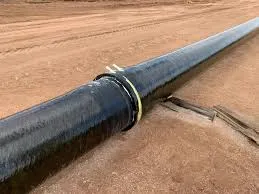
-
 Afrikaans
Afrikaans -
 Albanian
Albanian -
 Amharic
Amharic -
 Arabic
Arabic -
 Armenian
Armenian -
 Azerbaijani
Azerbaijani -
 Basque
Basque -
 Belarusian
Belarusian -
 Bengali
Bengali -
 Bosnian
Bosnian -
 Bulgarian
Bulgarian -
 Catalan
Catalan -
 Cebuano
Cebuano -
 China
China -
 China (Taiwan)
China (Taiwan) -
 Corsican
Corsican -
 Croatian
Croatian -
 Czech
Czech -
 Danish
Danish -
 Dutch
Dutch -
 English
English -
 Esperanto
Esperanto -
 Estonian
Estonian -
 Finnish
Finnish -
 French
French -
 Frisian
Frisian -
 Galician
Galician -
 Georgian
Georgian -
 German
German -
 Greek
Greek -
 Gujarati
Gujarati -
 Haitian Creole
Haitian Creole -
 hausa
hausa -
 hawaiian
hawaiian -
 Hebrew
Hebrew -
 Hindi
Hindi -
 Miao
Miao -
 Hungarian
Hungarian -
 Icelandic
Icelandic -
 igbo
igbo -
 Indonesian
Indonesian -
 irish
irish -
 Italian
Italian -
 Japanese
Japanese -
 Javanese
Javanese -
 Kannada
Kannada -
 kazakh
kazakh -
 Khmer
Khmer -
 Rwandese
Rwandese -
 Korean
Korean -
 Kurdish
Kurdish -
 Kyrgyz
Kyrgyz -
 Lao
Lao -
 Latin
Latin -
 Latvian
Latvian -
 Lithuanian
Lithuanian -
 Luxembourgish
Luxembourgish -
 Macedonian
Macedonian -
 Malgashi
Malgashi -
 Malay
Malay -
 Malayalam
Malayalam -
 Maltese
Maltese -
 Maori
Maori -
 Marathi
Marathi -
 Mongolian
Mongolian -
 Myanmar
Myanmar -
 Nepali
Nepali -
 Norwegian
Norwegian -
 Norwegian
Norwegian -
 Occitan
Occitan -
 Pashto
Pashto -
 Persian
Persian -
 Polish
Polish -
 Portuguese
Portuguese -
 Punjabi
Punjabi -
 Romanian
Romanian -
 Russian
Russian -
 Samoan
Samoan -
 Scottish Gaelic
Scottish Gaelic -
 Serbian
Serbian -
 Sesotho
Sesotho -
 Shona
Shona -
 Sindhi
Sindhi -
 Sinhala
Sinhala -
 Slovak
Slovak -
 Slovenian
Slovenian -
 Somali
Somali -
 Spanish
Spanish -
 Sundanese
Sundanese -
 Swahili
Swahili -
 Swedish
Swedish -
 Tagalog
Tagalog -
 Tajik
Tajik -
 Tamil
Tamil -
 Tatar
Tatar -
 Telugu
Telugu -
 Thai
Thai -
 Turkish
Turkish -
 Turkmen
Turkmen -
 Ukrainian
Ukrainian -
 Urdu
Urdu -
 Uighur
Uighur -
 Uzbek
Uzbek -
 Vietnamese
Vietnamese -
 Welsh
Welsh -
 Bantu
Bantu -
 Yiddish
Yiddish -
 Yoruba
Yoruba -
 Zulu
Zulu
Design and Applications of FRP Rectangular Tubes in Structural Engineering
Understanding FRP Rectangular Tubes Applications, Advantages, and Properties
Fiber Reinforced Polymer (FRP) materials have gained significant traction in various industries due to their superior properties compared to traditional materials like steel and aluminum. FRP rectangular tubes, in particular, are increasingly utilized in construction, automotive, aerospace, and marine applications. This article aims to explore the features, benefits, and applications of FRP rectangular tubes, highlighting why they are becoming a preferred choice in modern engineering solutions.
What is FRP?
FRP is a composite material consisting of a polymer matrix reinforced with fibers, typically glass, carbon, or aramid. This combination results in materials that possess high strength-to-weight ratios, corrosion resistance, and versatility in design. FRP is also customizable, allowing engineers to tailor its properties for specific applications. Rectangular tubes made of FRP offer the added advantage of efficient structural performance and aesthetic appeal, making them ideal for a wide range of applications.
Properties of FRP Rectangular Tubes
1. High Strength and Lightweight One of the most compelling aspects of FRP rectangular tubes is their high strength-to-weight ratio. They can support substantial loads while being significantly lighter than traditional metals, making them easier to handle and install.
2. Corrosion Resistance FRP materials do not rust or corrode like metals, making them suitable for harsh environments, including chemical processing plants and coastal areas. This property ensures longer service life and reduced maintenance costs.
3. Thermal and Electrical Insulation Unlike metals, FRP is a poor conductor of heat and electricity, providing thermal and electrical insulation. This characteristic is particularly essential in applications where temperature control and electrical safety are paramount.
4. Design Flexibility FRP rectangular tubes can be manufactured in various sizes and shapes, allowing for innovative designs that meet specific engineering requirements. Their production can be tailored to achieve specific mechanical and aesthetic properties.
frp rectangular tube

5. UV Resistance Modern FRP formulations incorporate UV inhibitors, making them effective in outdoor applications where sunlight exposure can degrade other materials.
Applications of FRP Rectangular Tubes
1. Construction In construction, FRP rectangular tubes are used in structural frameworks, columns, and beams. Their lightweight nature reduces the overall weight of buildings and infrastructures, which can be advantageous during seismic events. Additionally, their corrosion resistance makes them suitable for use in areas with high humidity or exposure to chemicals.
2. Automotive Industry The automotive sector leverages FRP rectangular tubes for various structural components, including chassis and support structures. By utilizing these materials, manufacturers can produce lighter vehicles that improve fuel efficiency without compromising safety.
3. Aerospace Applications The aerospace industry utilizes FRP rectangular tubes for aircraft and spacecraft components due to their lightweight and high-strength characteristics. These materials help improve fuel efficiency and overall performance while reducing overall weight.
4. Marine Applications In the marine industry, FRP rectangular tubes are used for boat hulls, railings, and other structural components. Their resistance to saltwater and other corrosive elements makes them ideal for use in marine environments.
5. Utilities and Infrastructure Utilities use FRP rectangular tubes in various applications, such as support structures for pipelines and power lines. The durability and resistance to environmental factors make them a reliable choice for infrastructure that must withstand challenging conditions.
Conclusion
FRP rectangular tubes epitomize the advances in material science, providing engineers and designers with a tool that offers exceptional strength, durability, and versatility. Their applications across various industries, from construction to aerospace, underscore their importance in modern engineering solutions. As technology continues to evolve, the use of FRP materials is expected to expand, driving innovations that will enhance efficiency and sustainability in multiple sectors. By investing in FRP rectangular tubes, industries can significantly improve their operational efficiency and reduce maintenance costs, making them a forward-thinking choice for the future.









